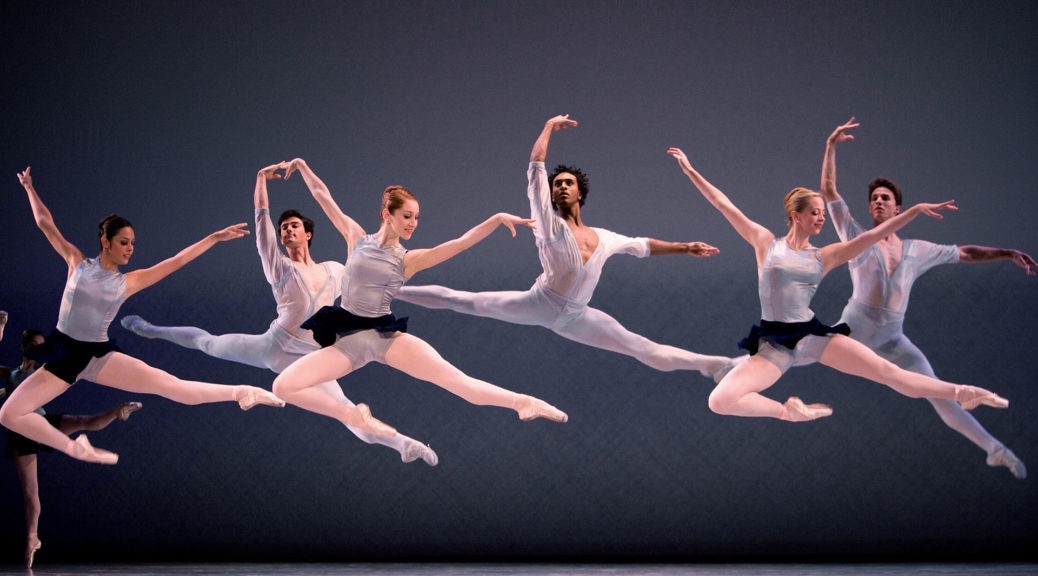
LIGHTS, IBSEN, ACTION AT S.F. BALLET
Every time that “Ibsen’s House” is brought out at the ballet, which is not nearly often enough, it’s a stunner of a modern dance drama.
Created a decade ago by Val Caniparoli, it features five couples playing out the tensions in a male-dominated society when the wife too yearns for a role, for latitude, even for freedom. It’s a social revolution that leaves you riveted with its electricity, even if you’re unfamiliar with Henrik Ibsen’s century-old plays like “Ghosts,” “A Doll’s House” and “Hedda Gabler” that inspired this dance abstraction.
The retired Lorene Feijoo, who used to own the role of Hedda here, is now supplanted by Dores André, a leadership figure with a sense of purpose and destiny. Her stares could bore right through the sturdy wooden walls of the Scandinavian manse. The two other play minis featured Sofiane Sylve and the blonde Jennifer Stahl, all of them propelled by the enigmatic, restive moods of the Dvorak Piano Quintet, Op. 81. The habile but stubborn husbands were played by Vitor Luiz, Tiit Helimets and the ubiquitous corps de ballet member Myles Thatcher.
Caniparoli ignites each duo with the basic marital conflict opposing the domineering husband, so that loving embraces quickly can melt into antagonism. In the most memorable and unusual sequence of movements, one couple down on the floor takes to tumbling like acrobats or couples madly wrestling, with one after the other rolling over the other’s back, legs flying in the air, moving from left to right. Though gone in a few seconds, it’s arguably the most unorthodox and powerful maneuver I’ve seen in more than a half-century of ballet-going. Caniparoli, whose main tasks here these days are playing dukes and kings in olden works as a principal character dancer, clearly remains a choreographer to watch—and to commission again.
Nonstop idea man Thatcher was back in his true métier, as choreographer, in the modern abstraction “Ghost in the Machine” (2017). Thatcher has the knack of trooping hordes of dancers on and off stage in various subgroups, and having large groups on stage with multiple choreographic variations. Thatcher is never afraid to be different, as when a couple dancing rests, each leans on the stage supports and looks on like fascinated spectators instead of making the accustomed exits. The complexity is something to admire, played out in an ultra-modern setting, with a set of oversize neon strings on high like an installation at MOMA (designed by Alexander V. Nichols).
An enigmatic tension in Michael Nyman’s score is underlined by a wailing soprano sax; later the music turns jazzier and more frenetic. Frances Chung headed the immense ensemble, which included André and di Lanno, also spotted enshrined in a sexy embrace on the cover of the current program magazine.
On a more traditional wavelength came Helgi Tomasson’s “On a Theme of Paganini” featuring not only the flawless precision of Maria Kochetkova, but also a fetching pas de trois by Sasha de Sola with Wei Wang and Max Cauthorn. The Rachmaninoff “Paganini Variations” featured, live, the nimble and ageless piano soloist Roy Bogas, who had been a laureate at the 1962 Tchaikovsky Piano Competition—56 years ago, no less.
Casts rotate, performance to performance.
S.F. Ballet, Program Three, Feb. 15-25, at the Opera House, S.F. For SFB info: (415) 865-2000, or go online.